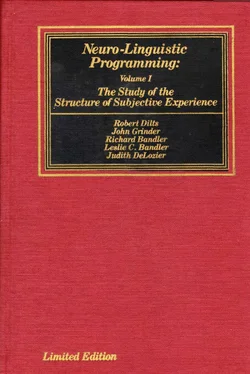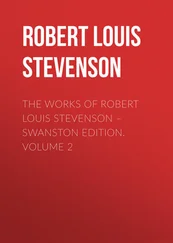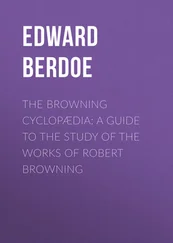T: She's relaxing a lot … She isn't crying anymore … (T's eyes have moved back up and to the left.)
A: As you look at her, I want you to tell me whether or not … if you were to mirror her body … whether or not you'd be willing to take on her feelings yet? (K e→K i)
T: (Looks up and left, then down and right, then back up and left) Uramm … Uh-huh …
A: Okay … Great … Now I want you to begin to mirror her (K e).
T: Okay … (Adjusts her posture by drawing her arms and legs together, and tilting her head down and to the right.)
A: Now I want you to step inside her for a moment so that you know how she … feels (K i) … and after you've done that … I want you to see (V c) if there's anything else you can do to help that child with those feelings.
T: (Looks up and right and readjusts her posture to an upright position) I can take her out of the place that she is … I can take her somewhere new …
A: Can you see where yet?
T: (Eyes shift back and forth from up right to up left position) … Yes …
A: Imagine the feelings of taking her there … and look at her and listen to her to see how she is responding.
T: (Eyes move from up and right to down and right to up and left) … Good … (begins to smile and nod her head)
A: Now I want you to step inside her again (K e→K i) and see (V c) what else she might need to do.
T: (Looking down and right and then up and left) She needs to open her eyes and look around and see all of the beautiful things around her …
A: Imagine yourself having her do that … (K e) How does she respond?
T: (Eyes scan back and forth from up left to up right, smiles and takes a deep breath) She loves it… it's like she's in a new world
A: Does she need anything else?
T: No, she's happy there.
A: Okay … Now I want to leave her there for a moment… and I want you to come back here with me so that I can ask you a question …
T: Okay … (Looks at A)
A: From now on when you see those gestures that have scared you or hear those words that cause that reaction … What can you do?
T: (Pauses) Ummm … I can open my eyes and look around?
A: (Smiles) That's right … That's the only way you're going to be able to tell if you're in real physical danger … And what are you going to do if one of those things happens and you're not in danger (Makes a threatening gesture at T by clenching his fist and scowling.)
T: (Face pales and flattens. Hesitates momentarily, then color returns.) …I. ..I. ..I did it (laughs) … I didn't go away
A: That's right … (smiles) … you can laugh and feel good … and anytime you need to you can always look up there and see that little girl with her eyes wide open . .. observing carefully everything around her …
The author went on to help T devise tests for being able to tell when she was in truly dangerous situations, and to design operations for dealing with those situations. He also tested her responses to the formerly problematic words. All were satisfactory.
In this example of utilization the author simply directed the therapist, step by step, through her own strategy for effective therapy, substituting internal representations for those that were normally external. The therapist essentially did therapy on her own internal representations, transforming them from anchors for a powerful negative kinesthetic state into an anchor for resources (opening her eyes and looking around).
The therapist completed the remainder of the workshop without interference, and, in fact, after this reference experience, was able to incorporate the material extremely rapidly. Within a few weeks after this workshop, her work with her clients had improved so dramatically that her client load had tripled as a result of client referrals. So marked was the increase in her client turnover rate that it created somewhat of a furor with the other therapists in her agency who had no idea about what was going on or what had occurred. She eventually left the agency, and has conducted a successful private practice ever since.
V. DESIGN
We all know what "design" means — or at least we pretend we do. In order to achieve a certain outcome that can't be immediately produced or that hasn't been done before, we devise a plan or design a strategy to accomplish that particular outcome — such as starting a new business, inventing a better mousetrap or bringing surface samples back from Mars. Strategy design is most effective when all appropriate sensory channels are used to survey available resources, including all relevant environmental variables and decision variables, and to decide how to utilize them effectively in generating the desired outcome.
Consider, for example, a simple topological problem. The outcome objective is to connect the nine dots below using only four straight lines without lifting your pen or pencil from the paper. Give it a try if you want to — look at it, check your feelings and talk to yourself about it.
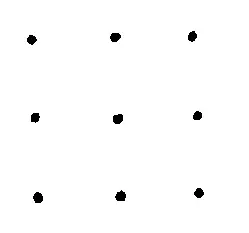
If you were successful, congratulations. Very few people are able to complete this design problem successfully because they assume one or more decision variables are in the domain of environmental variables. (See the next page for the solution.)
In our experience we have found that maximum effectiveness in design is achieved by making the fewest possible assumptions about contextual constraints — those features of a particular behavioral environment that only seem to be environmental variables— and by making creative and efficient use of available resources.
The most frequent assumption with this problem is that one's pen or pencil must not be moved away from the pattern of dots, in which case five straight lines are required to connect all dots. A second and less frequent assumption is that pen or pencil lines must not cross. The solution is:
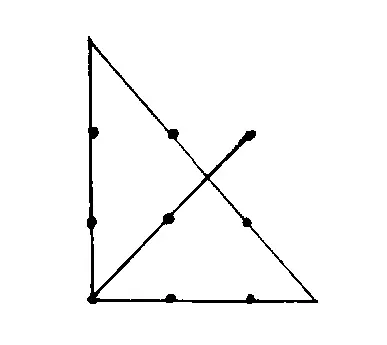
Sometimes the organization or individual with whom the programmer is working will have no strategy immediately available; for a particular outcome or, possibly, no strategy at all for securing the desired outcome. Others may have strategies, which, although achieving the outcome, are very cumbersome and inefficient. Still others have developed strategies which achieved an outcome that was important and adaptive in one context in the organization's or individual's personal history, but which have been generalized to contexts in which the outcome is no longer appropriate. In this case, the strategy very often becomes streamlined and efficient but the outcome becomes maladaptive. Since the strategy is so streamlined that it is entirely unconscious, the individual or organization loses some of the requisite capability to discriminate in the test phase and, since everything happens so quickly, there is little room for flexibility. The person or organization becomes ineffectual.
In each of these instances the programmer may be called upon to help design a new strategy for the individual or organization in question. Some cases require a design for more appropriate tests; others – need more effective and efficient operation designs. In cases where there is no existing strategy whatsoever, the programmer will have to design from scratch an entirely new sequence of representations.
Streamlining is required for strategies that are cumbersome or inefficient in achieving the desired outcome. For example, we have noticed that people who were good at reading aloud when they were children, or who are still good at sight reading, have a difficult time with speed reading. This is because they have developed a strategy that includes an auditory digital step in their processing of the written word; that is, they have a verbal translation phase in their reading strategy. Very fast readers do not have this step — the visual symbols making up the word directly access internal representations without the auditory digital step.
Читать дальше
